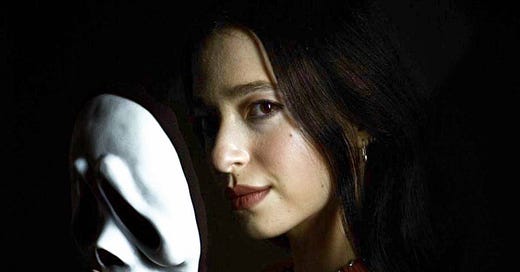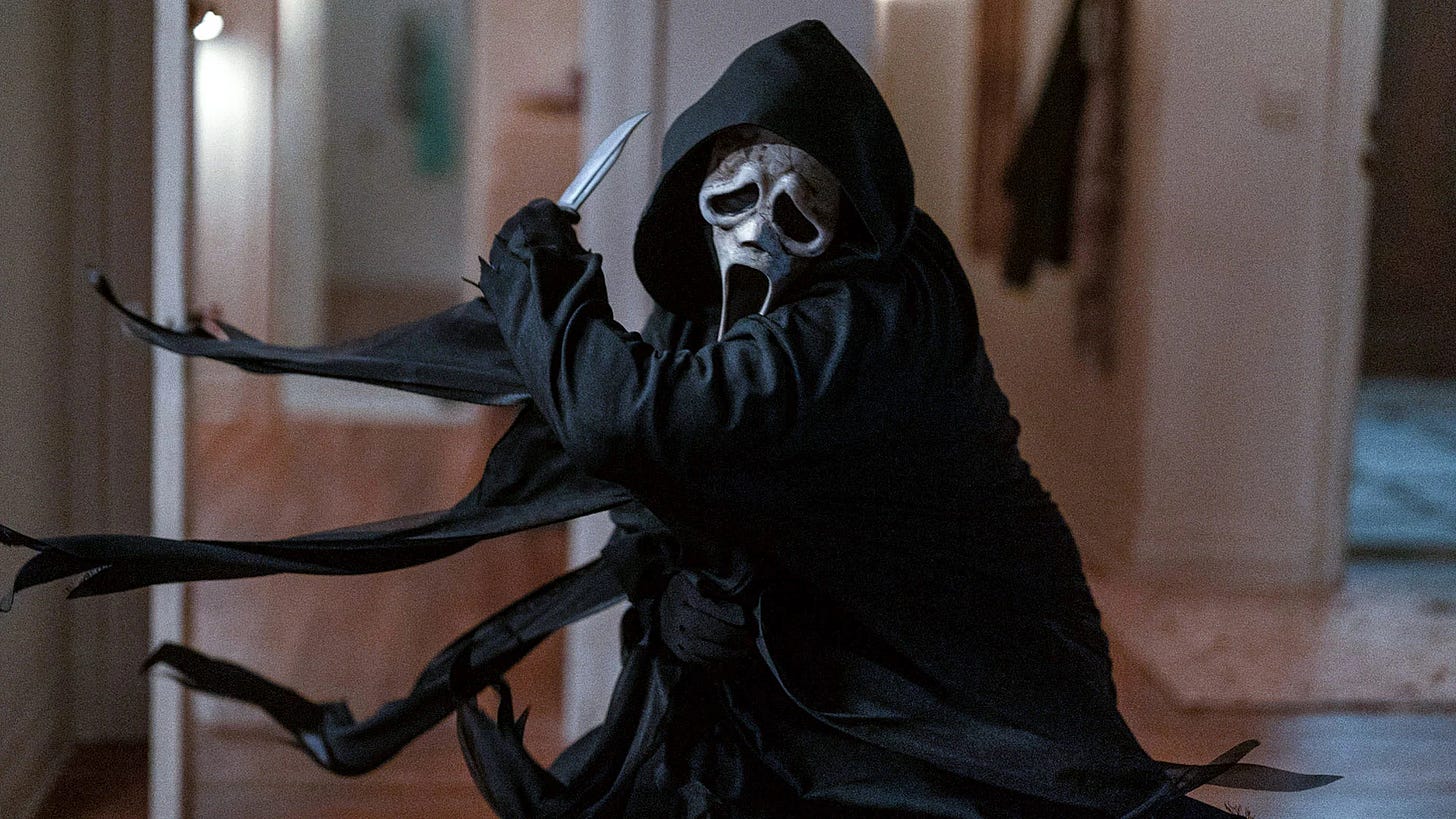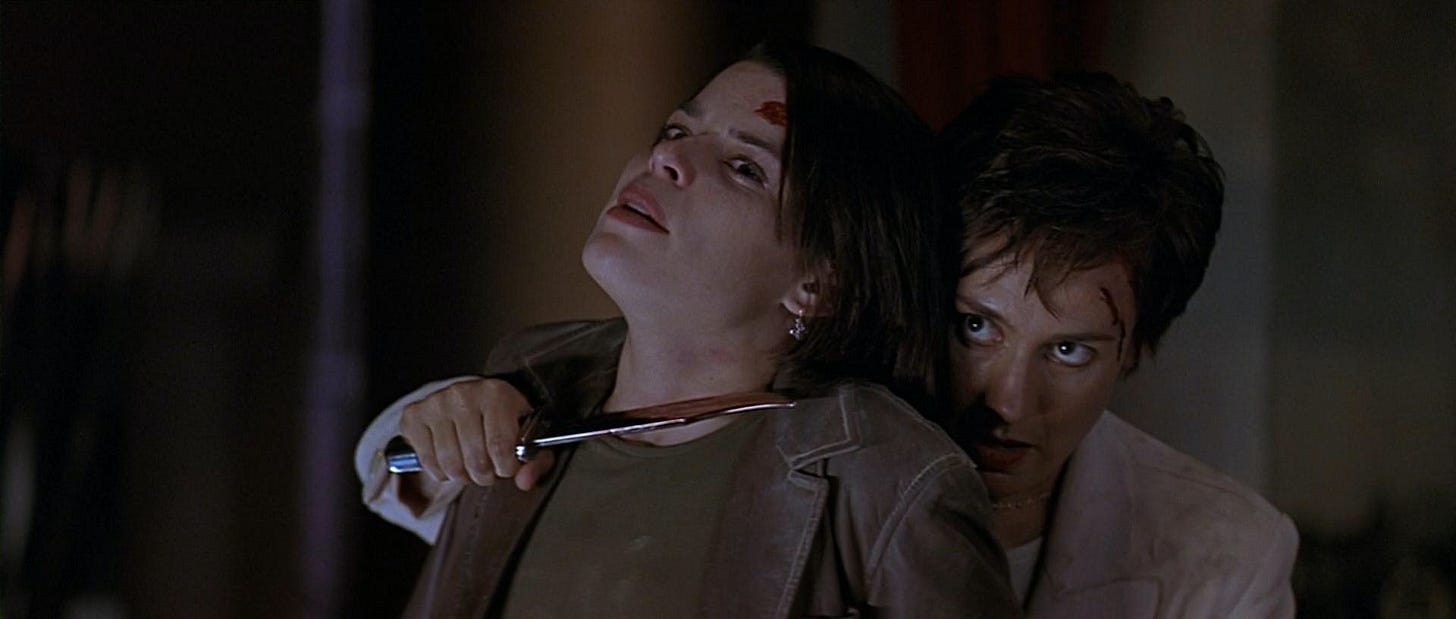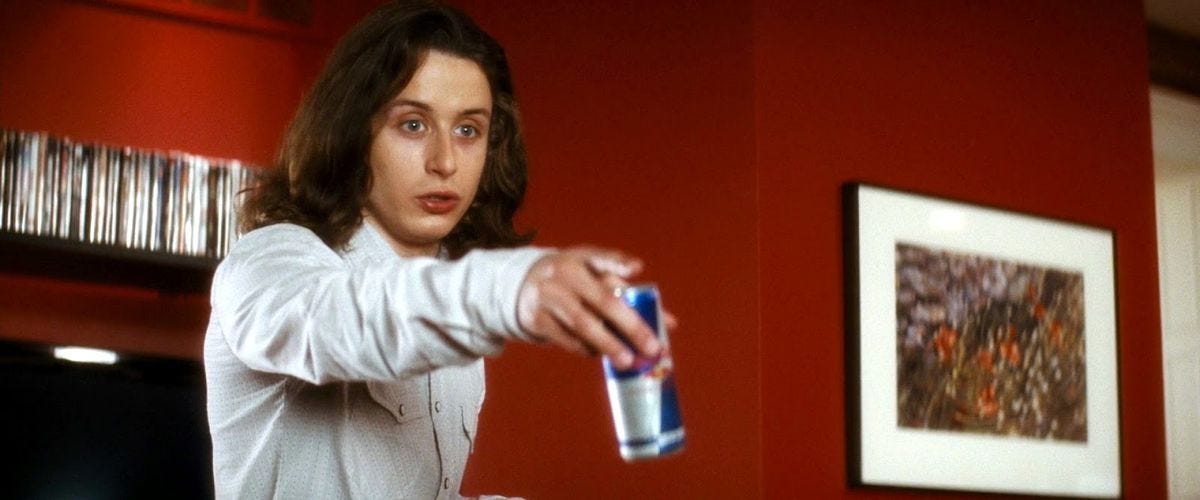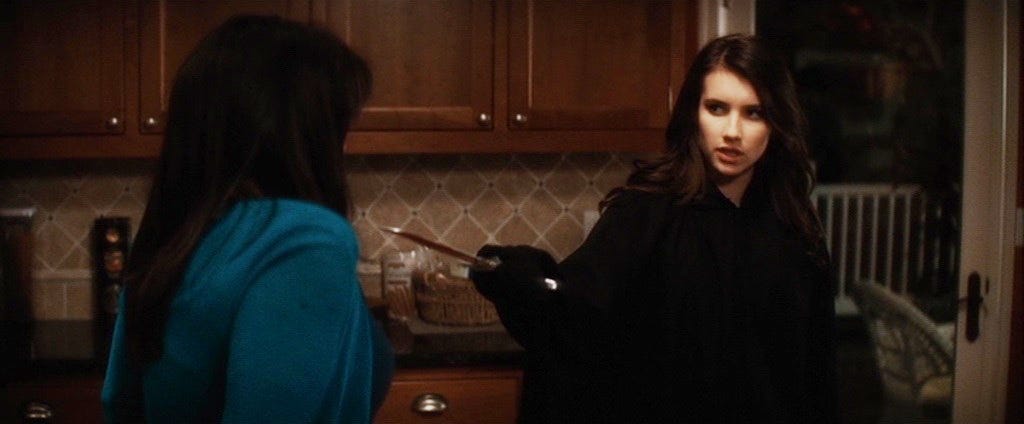It’s been a weird couple of months since I last dusted off the ole blog. In what ended up being a brief work stint in West Texas, I — to quote the great Gwyneth Paltrow — laughed, cried, sweated and had many epiphanies. Long story short, the Lone Star State and I weren’t meant for each other. But, I’m glad to be back at the drawing board if it means having more time to engage in hobbies I hadn’t been engaging in for a while. This, of course, means watching lots of films and writing about them.
Over the last couple of weeks, I’ve been on a horror stride. There’s something very comforting to me about scary movies, as weird as that sounds. No matter how frightening the imagery gets, few genres provide as much escapism. Even slashers — my absolute favorite horror subgenre — are often so preposterous, they become a welcome distraction from reality.
Like many others, one of my all-time favorite slasher movies is Wes Craven’s Scream (1996). The self-aware genre spoof became an instant classic at the time of its release, raking in $173 million at the box office and spawning a series of sequels. So far, we’ve seen the iconic cast led by Neve Campbell return three times, with a fourth sequel being slated for 2022. Because the killers and their copycats in this franchise always hide behind the same iconic mask and hood, the potential for good sequel ideas has been there from the very beginning — and each iteration of Ghostface has felt different from its predecessors because of that.
Having recently finished the series, I thought it would be fun to rank all seven Ghostfaces from worst to best. For simplicity’s sake, I decided to leave out the MTV television show. Of course, heavy spoilers follow, so continue at your own risk.
7. Roman Bridger - Scream 3 (2000)
Contrary to most fans, I don’t consider Scream 3 to be the worst installment in the franchise, but it goes without saying that the Ghostface reveal is by far the worst thing about it. Following some really creative chase sequences in the second act, the film delves into a finale that’s nothing short of head-scratching as the supporting cast gets killed off and it becomes evident that the killer is someone who barely appears during the film’s two-hour runtime. Enter Roman Bridger (Scott Foley) — by far the most vanilla character in this threequel.
In an exposition monologue that throws everything against the wall to see what sticks, it is revealed that Roman is Sid’s long-lost brother, and that their mother disowned him in an effort to start her life anew. In the end, the most memorable thing about this Ghostface is how he ruins what’s otherwise a perfectly watchable slasher sequel.
6. Mickey Altieri - Scream 2 (1997)
It’s hard to say whether Timothy Olyphant — a handsome and otherwise charming actor — was gravely miscast as the deranged Mickey, or if he was just doing his best with the frankly abysmal script of Scream 2. Regardless, his Ghostface was both unconvincing and unoriginal. A rehash of the first film’s far superior antagonists, he’s the type of character who’s given so little to do prior to the third act, you kind of forget he exists. When he’s finally revealed to be the killer, his personality flips like a switch. He also doesn’t have a motive — or one that makes any sense, at least.
Of course, it doesn’t help that Mickey is outshined by the film’s other villain, Debbie Loomis (played by the amazing Laurie Metcalf). While it made sense for him to be her pawn, the least Kevin Williamson’s screenplay could have done was characterize him more.
5. Debbie Loomis - Scream 2 (1997)
In a nod to 1980’s Friday the 13th, the main antagonist of Scream 2 winds up being the mother of its predecessor’s iconic killer, Billy Loomis (Skeet Ulrich). You know — the one who famously abandoned her family prior to the first film, acting as a catalyst for her son’s murders. It’s a retcon no one asked for, and although the sequel remains a high point in the franchise for a lot of people, this character just embodies everything I hate about the convoluted second and third installments.
Having said all that, it hurts to put Mrs. Loomis so low because Metcalf gives a banger of a performance, but the franchise has had better antagonists before and since. In any case, Mrs. Loomis can rest assured, knowing she’s a fan favorite — she just didn’t do much for this particular critic.
4. Charlie Walker - Scream 4 (2011)
Scream 4 is by far the best Scream sequel to me, and that’s largely thanks to its explosive third act. Here, Woodsboro High’s Cinema Club president Charlie Walker (Rory Kulkin), is revealed to be the first of two killers. Geeky and awkward, he’s a typical subversion of the classic movie antagonist, which makes it easy to predict that it’s him behind the mask. But, it’s his authenticity that ranks him higher on this list than some of the more colorful characters in this series.
At a time of increased awareness of the toxic masculinity that thrives in fandom communities and nerd culture, Charlie feels all too real — even in the context of this goofy franchise. His dialogue when he kills his crush, Kirby (Hayden Panettiere) because she spent years ignoring him at school, sounds like something straight out of an incel forum. Kulkin plays him to perfection in a performance that’s unhinged enough to fit into the campy Scream universe, but also refreshingly true-to-life in comparison to previous Ghostfaces.
3. Jill Roberts - Scream 4 (2011)
In the series’ best twist since 1996, the second Ghostface in Scream 4 winds up being Sidney’s cousin Jill (Emma Roberts), a fame-obsessed teen who despises the protagonist because of the legacy she brought upon their family. While this Scream installment understandably receives criticism for what some people perceive as a stereotypical and oversimplified portrayal of Generation Z, I see it more as an examination of intergenerational trauma. Jill’s motives seem superficial on the surface, but through her and Charlie, Craven and Williamson manage to examine the effects past generations have had on today’s youth. This includes everything from pop culture nostalgia to the after-effects of historic tragedies, such as the Woodsboro murders.
Allegory aside, introducing Jill as a new character and turning her into the antagonist is such a clever move when you compare it to the messy lore of the previous two installments. She’s also just ruthless and menacing. The final showdown between her, Sidney, Gale (Courtney Cox) and Dewey (David Arquette), is one for the ages.
2. Billy Loomis - Scream (1996)
As iconic as Ghostface is no matter who wears the mask, you just gotta reject modernity and embrace tradition when it comes to this franchise because it never gets better than the 1996 classic. As a horror deconstruction that revels in genre tropes while challenging some of the more outdated trademarks slasher movies are known for, Scream explores the ties between sexism and violence through its main antagonist — Billy Loomis.
Played by a handsome, young Skeet Ulrich, Billy is a teenage heartthrob whose casual misogyny becomes more and more evident over the course of the film, until he’s revealed as the killer. From the very beginning, there’s a hint of corruption beneath his charm when he pushes his girlfriend Sidney to have sex with him (as another character explains, women don’t tend to survive slasher movies unless they’re virgins). When Sidney becomes the final girl despite losing her virginity, the sexist cliché is subverted in a powerful way. If this film proves anything, it’s that there’s nothing scarier than a misogynist with mommy issues.
1. Stu Macher - Scream (1996)
As committed as the entire cast is in the first Scream, it’s Matthew Lillard who steals the show scene after scene as Stu Macher. An over-the-top clown whose constant hijinks could not feel more inappropriate in the context of the film’s brutal events, Stu’s sociopathy is clear from the very beginning. Long before he’s revealed as the second Ghostface, he’s shown as someone who has no empathy towards his murdered classmates, turning every tragedy into a tasteless joke.
Although the genius of Williamson’s screenplay lies in every character having a clear motive, Stu’s almost too obvious to be the killer. This is why the twist ending — that not one but two people have been committing the murders — is so perfect. It also allows Lillard to go all-out in the film’s third act and the eccentric actor relishes the opportunity, becoming one of the most memorable things about the modern classic.
Some villains are made; others are born evil. When Stu cites nothing other than peer pressure as his reason for becoming Billy’s partner-in-crime, it’s clear that he’s the latter. And there’s nothing more sinister — or refreshing — than that.


